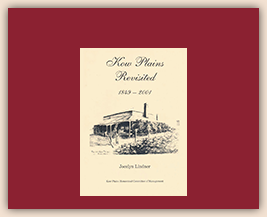
Malleefowl in the Big Desert
The following page has been constructed from information recorded by Robert Lindner of Tutye over a period of many years.
Many mounds of various ages from a new one formed in an old rubbish tip to large ones many years old and measuring m in diameter. The older and more used the nest is the larger it is.
The 20 plus nests that have been observed are in an area south of Tutye. Each year there appear to be an average of about 5 nests working, 2002 a drought year was an exception when only one nest was worked. It is likely that birds use different mounds depending on the availability of leaf litter.
Since observing the birds several beliefs have been discounted.
- Birds rake the leaves up with there powerful legs not with their wings.
- Both birds work on preparing the nest.
- The male does most of the work and tests the temperature during the laying time.
- The male is distinguished from the female by the larger dark grey patch on his wings when birds are together he is noticeably larger and more heavily built.
Towards the end of March and early April the mound is opened up to a depth below ground level this leaves a large crater, this marks the end of the season. Depending on the rain fall the birds start preparing the nest from the end of May until July. The birds rake up leaves with their powerful legs into rows from a distance of up to 30 meters from the nest , the leaves are brought into the centre of the nest and the crater is filled to an approximate depth of 1 meter.
This is then left until it rains. As the leaves decay the temperature is tested by the male bird who uses his beak and tongue for this. When the leaves have decayed sand is mounded over to a depth of 1 meter to maintain the temperature till the female is ready to lay. When the female is about to lay both birds open up the nest communicating to one another with a single note the male returns to the edge of the mound and waits while the female digs further before laying an egg. After laying she leaves the crater and he returns and fills in the crater.
The pink eggs 9 cm long with a diameter of 6cm are placed pointy end down in a circle about 30cm apart. The number of eggs laid depend on the season and the availability of food such as cassia and wattle seeds, nectar and insects , they do not need to drink from surface water. Eggs take up to 57-60 days to hatch the young birds make their way to the surface and then have to fend for themselves. The mortality rate is high because of predators such as foxes wild dogs and feral cats.
During the laying season the male tests the temperature of the nest daily and opens up the nest or mounds it higher or leaves it as is, what he does depends on the difference between mound temperature and air temperatures as well as the expected temperature of the day. Throughout the incubation period the mound must be maintained at a constant temperature of approximately 33C°.
It is known that birds mate for life and live for approximately 25 years. They can fly for reasonable distances and are thought to perch at night to avoid predators.
29th January 2011
In December 2002 Bush Fires burnt out a large area of the Big Desert, birds were last seen at a nearby mound in May 2003. Up until 2002 an average of 5 mounds were active but since the fires there have been no active nests or only one. No mallee fowl or tracks had been observed up until a few weeks ago when tracks were observed around and on nests and along desert tracks. This is a positive sign that there are some birds back in this area.




